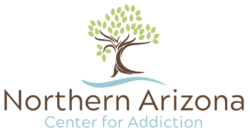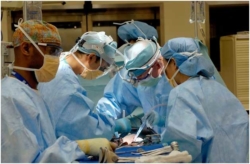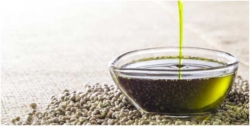Alcohol withdrawal refers to the changes your body goes through when you’ve abruptly stopped drinking after prolonged alcohol abuse, and it’s one of the clearest signs of alcohol addiction. With time, your body adapts to the presence of a certain level of alcohol in the system. If this level suddenly decreases, it has to readjust, which causes distressing side-effects such as anxiety, insomnia, tremors and nausea.
Table of Contents
In some cases, it can lead to life-threatening complications. Many people are afraid to quit drinking precisely because they have experienced these symptoms during past attempts. Perhaps you or someone close to you have tried to quit cold-turkey but realized that the symptoms were more difficult to manage than you had imagined, so you go back to drinking because it gives you relief.
Alcohol withdrawal syndrome can be dangerous and challenging. Fortunately, treatment options are available to significantly reduce the risks and the severity of the symptoms.
Causes, Symptoms & Risks
Prolonged alcohol abuse has a profound effect on multiple functions of the body, including how the brain responds to certain neurotransmitters. It leads to changes in brain chemistry, particularly the GABAergic system. GABA or Gamma-Aminobutyric Acid is an inhibitory neurotransmitter which means it reduces neural excitability. Attention, coordination, anxiety responses, and sleep all involve GABA.
Glutamate is another neurotransmitter that has the opposite effect. Glutamate is an excitatory neurotransmitter which nerve cells need to send a signal between each other, and it plays a major role in learning and memory.
Alcohol is a depressant, so it interferes with both of these neurotransmitters since it slows down brain activity. The brain tries to compensate for this interference by increasing excitatory neurotransmitters and decreasing inhibitory neurotransmitters. When alcohol intake stops abruptly, the brain needs to readjust, but this can take some time, so it results in an overactive central nervous system.
Timeline of Alcohol Withdrawal Symptoms
Now everyone who stops drinking alcohol will experience withdrawal symptoms. It depends on how much, how frequently and for how long the person has been drinking. Similarly, not everyone will have the same withdrawal symptoms, and their intensity also varies.
Usually, withdrawal symptoms will begin a few hours after you’ve had your last drink and they’re worst between 24 and 72 hours after you stop drinking when the alcohol levels decrease, and the body tries to readjust.
In the first 6 to 12 hours, you can expect symptoms such as nausea, headaches, tremors, agitation, anxiety and vomiting. Between 12 and 24 hours after ingestion, you may experience hand tremors, disorientation and seizures. After 48 hours – insomnia, high blood pressure, fever, sweating, seizures, hallucinations and delirium tremens. Delirium tremens (DT) is a rarer (5% of cases) and more severe form of alcohol withdrawal that includes symptoms such as:
- Dangerous changes in blood pressure
- Irregular heartbeat
- Agitation
- Confusion
- Tremors
- Fever
- Sweating
- Seizures
- Sensitivity to light, sounds and touch
- Rapid shifts in mood
Since symptoms of DT can be fatal, if you’re a heavy drinker who wants to quit, it’s best to get professional help for alcohol addiction so you can manage your withdrawal symptoms safely. As we mentioned before, the first few days tend to be the most intense so it’s better to go to a rehab facility where they have medical professionals who can assess you mental and physical state throughout the day and keep your symptoms under control.
After the first few days, depending on the severity of alcohol abuse, some people may experience post-acute withdrawal syndrome or PAWS. PAWS involves symptoms like:
- Trouble sleeping
- Low energy
- Anxiety
- Irritability
- Emotional outbursts
- Delayed reflexes
- Dizziness
- Memory problems
- Nausea
- Intense cravings
PAWS symptoms are a major cause for relapse. The brain can adjust to the absence of alcohol, just like it adjusted to its prolonged presence. Still, this doesn’t happen quickly. PAWS symptoms peak after 4 to 8 weeks but can last for several months. The good news is that they tend to be cyclical so you’ll have days in which you feel perfectly fine and days in which you’ll experience low mood, low energy and intense cravings. Each episode lasts only a few days. During treatment, you can learn coping mechanisms so you can resist the temptation to drink until the symptoms resolve themselves.
Treatment of Alcohol Withdrawal Symptoms
As mentioned before, withdrawal symptoms can be a major obstacle in quitting drinking and maintaining sobriety. Fortunately, these symptoms can be greatly reduced with appropriate medical care.
Inpatient treatment in a rehab facility offers many benefits, such as a safe, supervised environment with 24-hour care. The duration is typically 30, 60 or 90 days.
If you’ve tried to quit drinking on your own in the past, but your withdrawal symptoms were severe, it’s better to opt for a medically-assisted detox program. These programs usually last seven days or less. Trained professional will monitor you closely and administer medications as needed.
Outpatient treatment allows you to attend to your daily responsibilities while you’re in recovery. It’s best suited for people with more mild withdrawal symptoms that don’t require medical 24-hour medical supervision. You can also transition from inpatient to outpatient care as long as you feel ready to handle being around triggers. One of the most important advantages of inpatient treatment is that you are away from your usual triggers.
During treatment, you will also go through counselling sessions or psychotherapy if it turns out that you have an underlying mental health condition like anxiety or depression. During your sessions, you will learn healthier ways to cope with uncomfortable feelings and how to handle triggers and cravings.
Since recovery continues long after the initial stages of your treatment, you will be put in contact with support groups that can offer you an outlet to discuss your struggles and sobriety goals. Support groups are important because they motivate you to continue on the path to sobriety.
As you progress through the different stages of your treatment, you can choose which activities and programs best suit your needs. The key is to have access to the tools, techniques and social support system that will allow you to prevent triggers, resist cravings and continue to live a well-balanced life long after rehab. Remember that you do not have to wait until you’ve reached a crisis point to get help.






